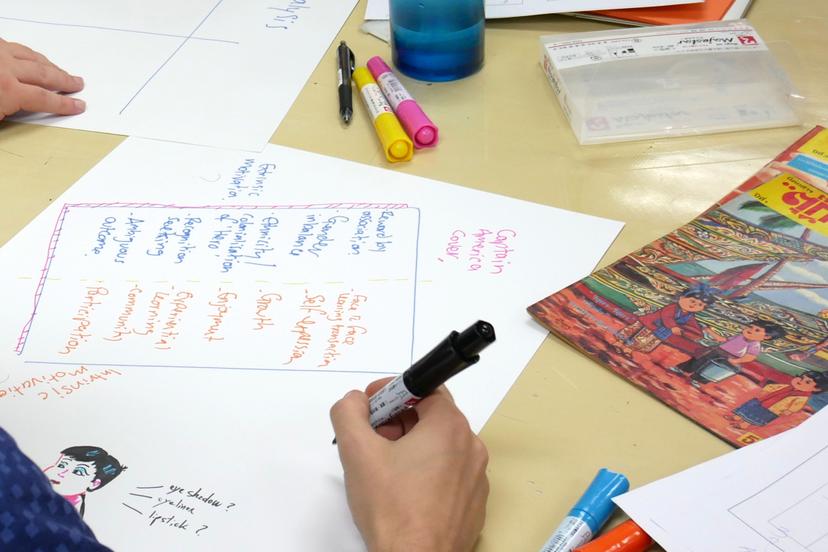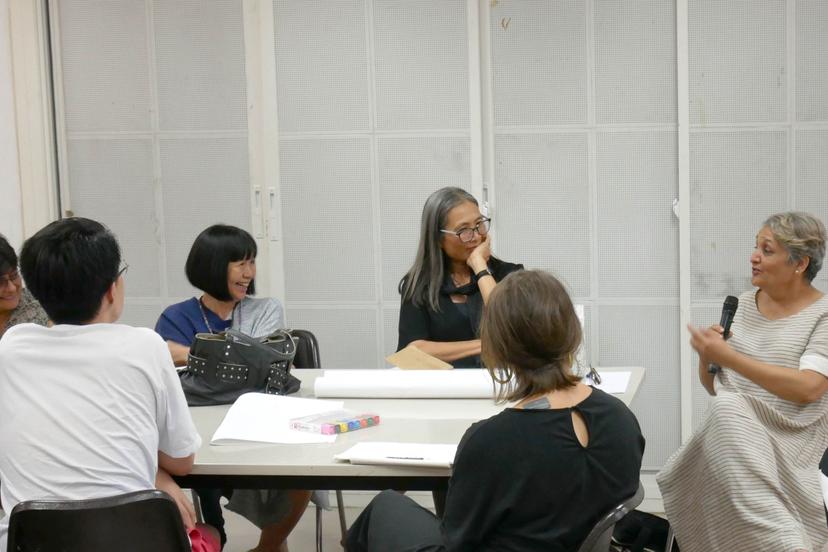About CommMA
The MFA in Communication Design (CommMA) is a two-year international programme offered by the Department of Industrial Design within the Faculty of Architecture of Chulalongkorn University. Critically addressing contemporary design and the contexts of Southeast Asian cultures, CommMA aims to be a centre for the investigation, production and archiving of practices that shape design as research-driven, experimental and socially conscious.


Experimental Communication Design

Type Design as Research
Visual communication has become essential to the experience of the contemporary world, and as new technologies continually emerge, design disciplines evolve and also merge. Further, our globalized era demands a greater awareness of the complexity of traditions and roles of visual communication across different geographical or cultural contexts. CommMA responds to these challenges with a choice of two pathways: Experimental Communication Design and Type Design as Research. Both allow for student practices with a wide range of aims while the latter supports studies in Southeast Asian typographies, specifically the countries of CLMV-Cambodia, Laos, Myanmar and Vietnam. A unique aspect of CommMA is in the excavation and interpretation of overlooked or understudied aspects of local and regional histories.
Experimental Communication Design focuses on the experimental approach to design. This pathway emphasizes the term “experimenting” as not being afraid of taking risks while searching for possibilities in design approaches. The pathway is guided by key questions: “What is communication design?”, “What can communication design be?”, and “What might communication design do and how?”. Communication design is not limited to graphic design, advertising, information design, and product design as outcomes. Instead, it also focuses on the process, method, inquiry, or dialogue involved in investigating specific subjects. These aspects allow the pathway to embrace diverse and creative approaches to communication design.
Type Design as Research focuses on research into SEA scripts. This pathway not only involves learning practical skills in type design but also aims to understand the type design process and the rich history and background of typography in the region whether historical or technological background that reflects its formation. The pathway emphasizes in-depth research to explore type development from as many perspectives as possible. By combining technical knowledge with contextual understanding, this pathway seeks to expand the possibilities of type design as a discipline. Through research and exploration, it allows for the creation of typefaces that not only preserve tradition but also innovate within the broader field of design.
Both pathways support the development of innovative methodologies. CommMA’s curriculum stresses creative and critical processes and solutions. The rapid development of digital technology in recent decades has allowed for equitable, widespread, access to design skills. Therefore it has become imperative that students learn from the contextual challenges of studio experience, to understand myriad ways of pursuing knowledge, solving problems, and achieving resolution.
Housed within the dynamic environment of the Communication Design Programme (CommDe) and Thailand’s leading Faculty of Architecture, CommMA students work alongside emerging and established practitioners. This fully ensures a broad view of communication design, its interdisciplinary potentials, and that our graduates are prepared for a range of professional contexts.
Our Mission
The MFA in Communication Design (CommMA) aims to instill graduates with the skills to employ creative practices as a tool, process and result of research. These practices are contextually and culturally sensitive. The programme also aims to cultivate a solid foundation for the advancement of communication studies in the region of Southeast Asia and beyond. Our students develop projects based in experimentation and shaped by methodological rigour while working across traditional, new and emergent media. With a curriculum that emphasizes reflexivity and encourages the broad significance of regional interests, CommMA functions as a genuinely innovative programme of study.
Why Choose CommMA?
Practice
Communication Design is an ever-expanding area of practice and theory and CommMA embraces a wide range of methods while opening out possibilities for how design can function. Making is central to this. And making is rigorously understood as research, or the production of new knowledge. Our two pathways, Experimental Communication Design and Type Design as Research, allow for a critical understanding of practice-based research as a form of inquiry while supporting the individual concerns of students. This marries practice to theory and encourages, particularly in the latter pathway, a dialogue between the historical and the contemporary in acknowledging ‘design’ as a process to be continually reinvented.

Context
Southeast Asia is one of the most diverse regions in the world, socially, culturally and politically. Influences from ancient India, Imperial China and the West through to the uneven spread of modernity has created a layered and complex landscape. The city of Bangkok is established as a local gateway and CommMA understands our centrality both specifically and broadly. The programme supports research into regional and intra-regional forms of design while also investigating Southeast Asia’s international significance for visual cultures. Student practices are not all required to address these contexts but graduates emerge with a critical consciousness beyond Western-centric worldviews.

Community
Students are welcomed from the disciplines of both art and design as well other practical and academic contexts. This interdisciplinary environment extends the achievements of our undergraduate programme, CommDe, which has established itself as a leading department for experimental communication design. To be part of our community is to be engaged in crucial dialogues with emergent practices and your peers. Our staff are experienced across a wide range of areas including conservation, design education, editorial design, new technologies, social and political histories of design, and visual cultural studies. And all have extensive contacts with industry and other professional contexts.

CommMA Staff
Browse profiles of our management team, teaching staff, and visiting lecturers.

Associate Professor Dr Juthamas Tangsantikul
Programme Chair, Pathway Leader Experimental Communication Design

Associate Professor Dr Takerng Pattanopas
Senior Lecturer

Dr Brian Curtin
Course Leader Academic Writing on Communication Design and Seminar in Communication Design

Dr Ratchada Jayagupta
Course Leader Southeast Asian Studies for Communication Design and Seminar

Anuthin Wongsankakorn
Pathway Leader Type Design as Research

Associate Professor Dr Thanathorn Kittikant
Programme Secretary, Course Leader Special Topics for Communication Design

